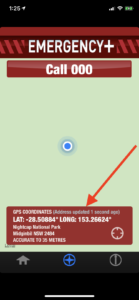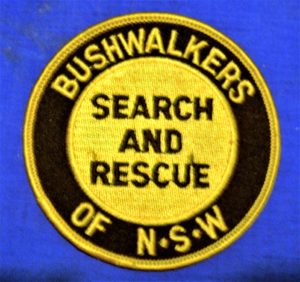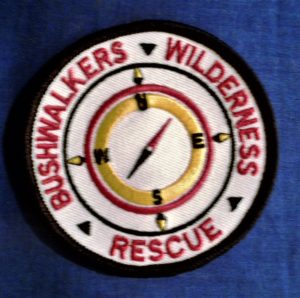Splendour Rock in the Wild Dogs of the Blue Mountains with its fabulous location is a unique war memorial that has attracted visitors from all over the world. There is value in old photos. Your help could make a planned book on Splendour Rock even better. I am after photos of Jack Cummings as the Convenor of ANZAC Day Dawn Services. Jack started the current series of an annual Dawn Service at Splendour Rock but it is a tragic tale.
Around 1990 Jack lead his first Dawn Service as a member of the (ex) Nepean Bushwalking Club. He did so each ANZAC Day until his tragic death in 2001. Now 2001 was not a good year for the Cummings family as on Christmas Day their family home and hence many bushwalking records were destroyed as a bushfire engulfed the town of Warragamba.
I am also after photos of something that is easy to overlook. You camp on Mt Dingo but do you take photos of it? Photos of camping on Mt Dingo before an ANZAC Day Dawn Service would also be appreciated.
Photos must be of the highest possible resolution. All photos that are used will be acknowledged but (of course) not all photos will necessarily be used. The aim is diversity in photos so please look through your old photo albums for relevant photos. The more to choose from the better.
This small memorial raises many questions. Who were the fallen bushwalkers? Who cast the plaque and how / when was it installed? Which bushwalker found this site and why was it chosen for the memorial? When were Dawn Services held and do we have any old programs? Who were the bushwalkers who served in WWII and returned? What was the “Bushwalkers Service Committee”? What about the “MATES” memorial? The planned book by Michael Keats and I will answer these and many other questions with a wealth of information about this memorial plus several other memorials in the immediate area. Hence, it should become a valuable reference for any bushwalker. The story of Splendour Rock and the other memorials is a fascinating part of the history of bushwalking.
Coast and Mountain Walkers (CMW) have provided many excellent early history photos. Other clubs must also have photos. I am keen to balance this CMW contribution with more diversity.
Send your scanned photos to history@bushwalkingnsw.org.au
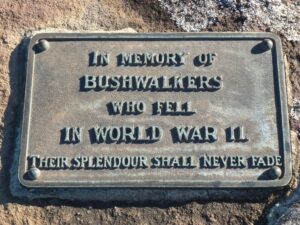
Splendour Rock Memorial 1948

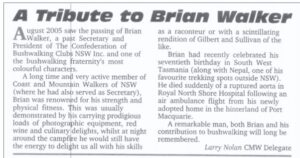
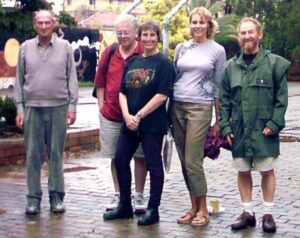
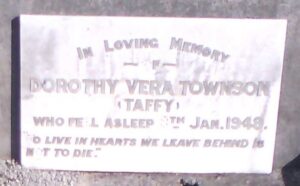
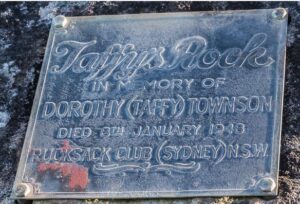
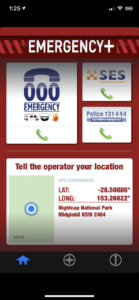 using the Emergency+ app it is no different to dialling 000 from a normal phone. It does not send any special information and it does not send your position to the 000 operator. You will still have to tell the operator your position, and that can be the GPS coordinates from the Emergency+ app if that is the best way to do it. On the Emergency+ app it gives your GPS coordinates in a box titled “Tell the operator your location” – you have to tell the operator your position as the operator cannot read it from the phone directly.
using the Emergency+ app it is no different to dialling 000 from a normal phone. It does not send any special information and it does not send your position to the 000 operator. You will still have to tell the operator your position, and that can be the GPS coordinates from the Emergency+ app if that is the best way to do it. On the Emergency+ app it gives your GPS coordinates in a box titled “Tell the operator your location” – you have to tell the operator your position as the operator cannot read it from the phone directly.